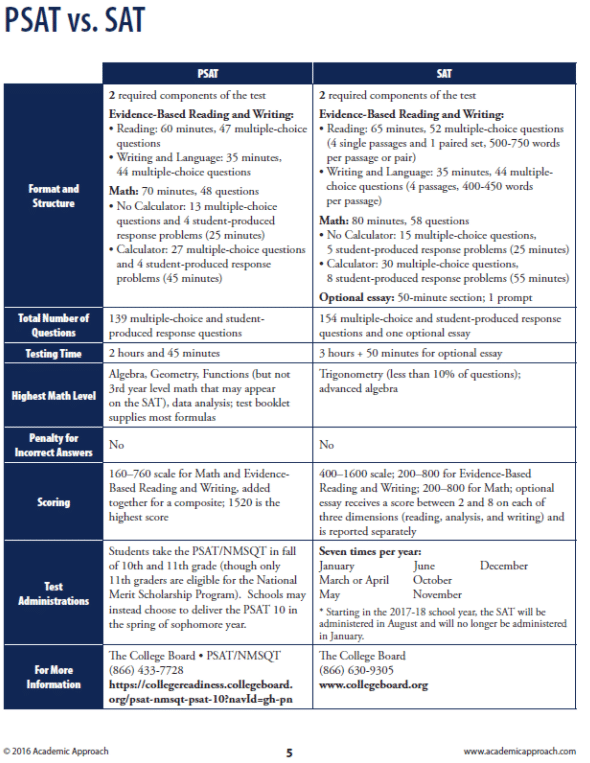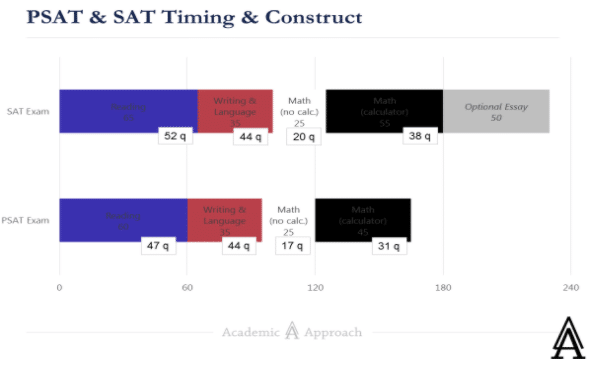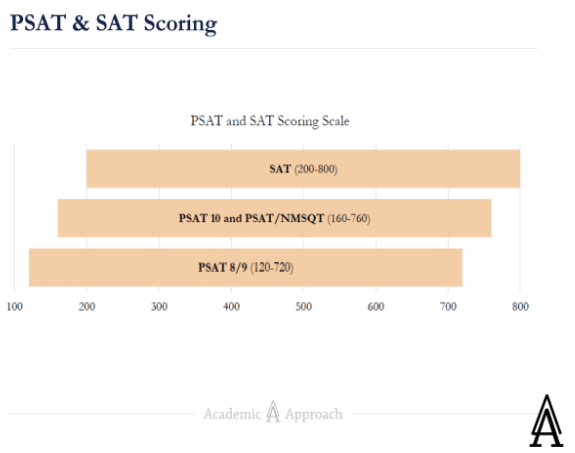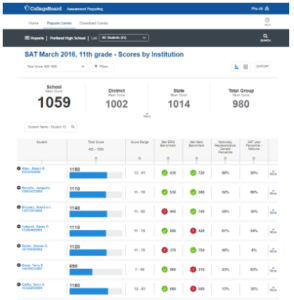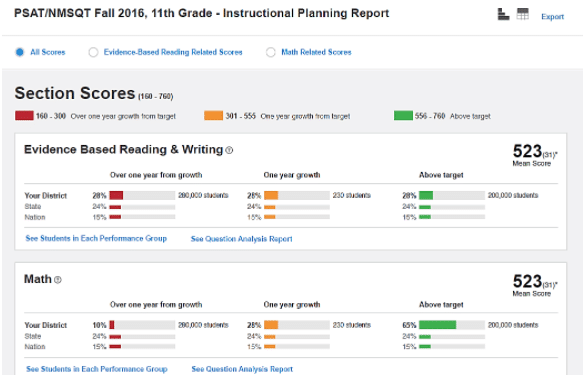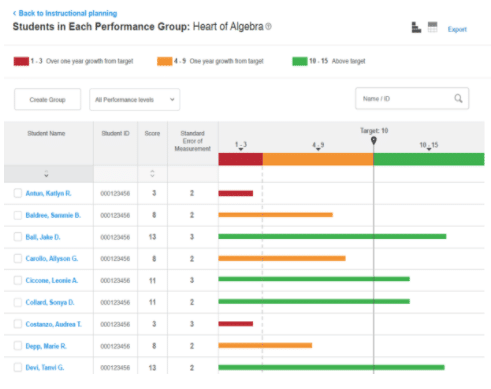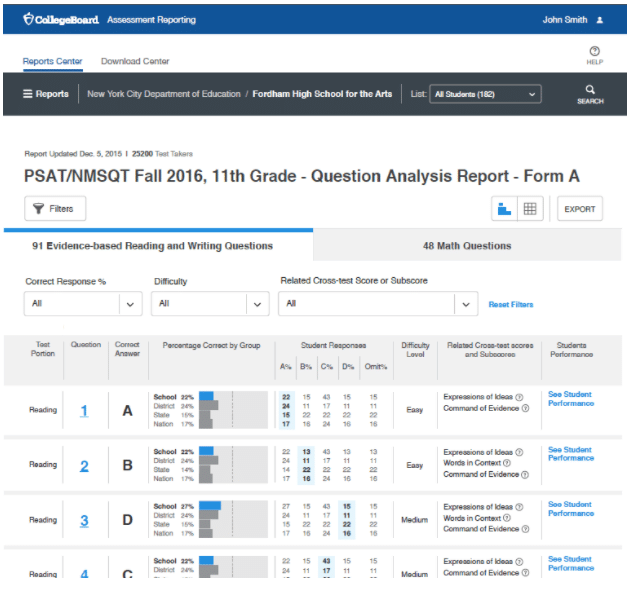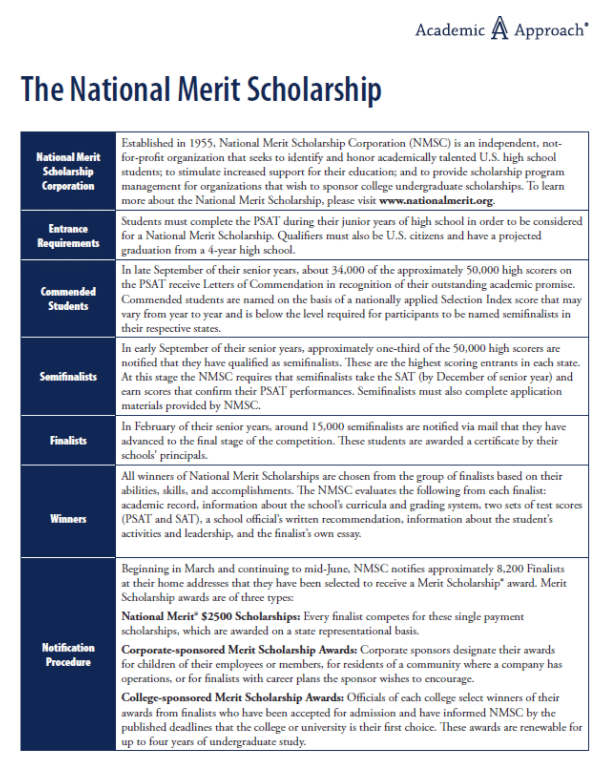
What is the PSAT?
The PSAT is a practice SAT administered by the College Board and available to students in grades 8 through 11, with the PSAT 8/9 offered to 8th and 9th graders and the PSAT 10/PSAT NMSQT (identical tests) offered to 10th and 11th graders. The PSAT serves 3 important purposes: it helps students predict, learn, and qualify.
Predicting with the PSAT
Since its 2016 revision, the PSAT 10/PSAT NMSQT has become a better-than-ever instrument at predicting the SAT. This is true in part because the PSAT now comes very close to a full-length SAT, covering nearly identical content in almost the same amount of time.
Evidence-based Reading & Writing
- PSAT’s Reading is almost identical to SAT’s, except PSAT Reading is 5 questions fewer and 5 minutes shorter.
- PSAT’s Writing & Language is the same as SAT’s.
Mathematics
- PSAT’s no-calculator section is 3 questions fewer than SAT’s but offers same amount of time.
- PSAT’s calculator section features 7 questions fewer in 10 fewer minutes.
The Essay
- The SAT optional essay is NOT offered at all on the PSAT.
The table below offers a side-by-side of the construct and content of both exams.
Join the A+ Newsletter!
We promise, no spam—just a monthly dose of educational insight, strategies, and exclusive tips straight to your inbox.
15 questions, 15 minutes
In short, the PSAT is only 15 questions fewer and 15 minutes shorter than the SAT, in terms of the material that contributes to a student’s composite score. Note: the SAT essay does NOT impact the student’s composite score, so its absence on the PSAT is not critical.
The table below offers another view of the close comparison between the PSAT & SAT.
Good News for Students
The close comparison of the PSAT and SAT is good news for students. From both a content and experience standpoint, taking the PSAT prepares a student for the material covered on the full-length SAT as well as the experience of sitting for a lengthy exam and concentrating on rigorous academic material for approximately 3 hours.
It wasn’t always this way! Before the 2016 revision, the PSAT from 2005 to 2015 was approximately one half the length of the full-length SAT, denying a student a complete picture of the marathon test-taking experience that the SAT demanded.
What’s more, learning from the PSAT is possible year over year. Because the PSAT system offers testing from 8th grade to 11th grade, if a school district offers that testing, a student can have a transparent view of where he or she is tracking towards 11th grade. In fact, College Board has tiered the scoring on the test to help make a more accurate prediction of exactly where the student would be on the SAT at that point in their academic career.
The detail below shows the tiered scoring of the PSAT from 8th grade through the 11th grade PSAT/NMSQT.
Learning from the PSAT
Learning from the PSAT is the most important reason for students to take the test. As a low-stakes diagnostic test, it can be directional, putting students on a productive path towards focused improvement. Through College Board, educators receive a host of reports that provide insight into student performance.
High-level View: Composite Scores
The highest-level view of performance is the total score and the two section scores: Evidence-Based Reading & Writing and Math, which can be found in the Scores by Institution report. These scores begin to tell the story: is there symmetry between the skills areas? Is there a discrepancy that calls for particular attention and focus? Percentiles provide context on a student’s performance in comparison to peers. This report also provides green checkmarks to indicate that a student has met the college readiness benchmark for each section. The college readiness benchmark indicates that a student is prepared for college-level work in that subject (and is likely to pass a freshman-level course on that topic at a college or university). In addition, the Scores by Institution report provides comparisons to the district and state averages for a given test. This report can be filtered by a number of demographic features.
Subscores: Curricular Focus
Learning from the PSAT is easy with the detailed information provided by subscores. Subscores help you drill down into the data: is there a particular question type in reading or domain of grammar or math that is in need of instructional attention? The Instructional Planning report can provide additional context. The subscores provide more detailed information on particular skill areas, and the red, yellow, and green color bars indicate a progress towards college readiness for the cohort as a whole. Teachers can click into a given subscore or cross-section score to see individual student performance.
Question & Answer Analysis: Question-level detail
The most productive learning from the PSAT takes place at the question level, which can be performed using the Question Analysis Report. “What did I get wrong and what did I pick instead of the correct answer?” There is no true learning from the PSAT without the analysis of error, and digging into the thinking behind erroneous answers builds skills and self-knowledge. “Was that an easy, medium, or hard question?“ “Oh, I see why I picked C instead of B – I missed that detail in the passage, don’t understand comma use perfectly, or failed to distribute a negative when FOILing out that algebraic expression.” The question-level feedback also provides the relationship to the cross-section and sub-section scores, so teachers can identify if the question they missed was related to a particular skill area. It also provides context on performance at the district, state, and national level.
The Test Booklet: A Window into Student Problem-solving
With a student’s score report comes the actual test booklet they utilized for the PSAT. This booklet is the key to learning from the PSAT. Inside you can see the student’s work. Did she annotate the reading passage? Did he write out his steps in that math problem or instead do mental math and hence the careless mistake?
The booklet provides the incredibly valuable opportunity to explore the student’s specific problem-solving process. That opens the door to coaching, modifying, growing, and learning from the PSAT. In all, the PSAT provides a valuable instrument for predicting, qualifying, and, most of all, engaging in a valuable learning process.
Additional Reporting with Academic Approach
Academic Approach provides detailed reporting on practice SAT and PSAT tests for schools and teachers, along with comprehensive curriculum support resources to create formative assessments and classroom activities to support student growth on college-readiness skills as assessed on the SAT. These reports provide standard-level reporting and key recommendations to improve a student or cohort’s college readiness.
Qualifying with the PSAT
The PSAT can also help a student earn recognition, as either a commended scholar or a national merit scholar.
Each state has two cut-off thresholds for qualifying, which are determined by fall of senior year. The lower threshold triggers qualification as a commended scholar, while the higher triggers qualification for national merit. Many colleges offer scholarships associated with these honors, though PSAT NMSQT scores are typically not provided to colleges as part of a student’s application.
Details on the National Merit Scholarship are offered in the table below:

